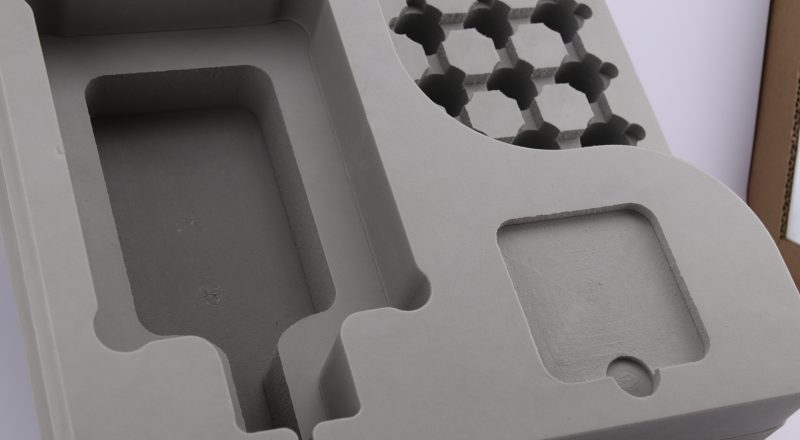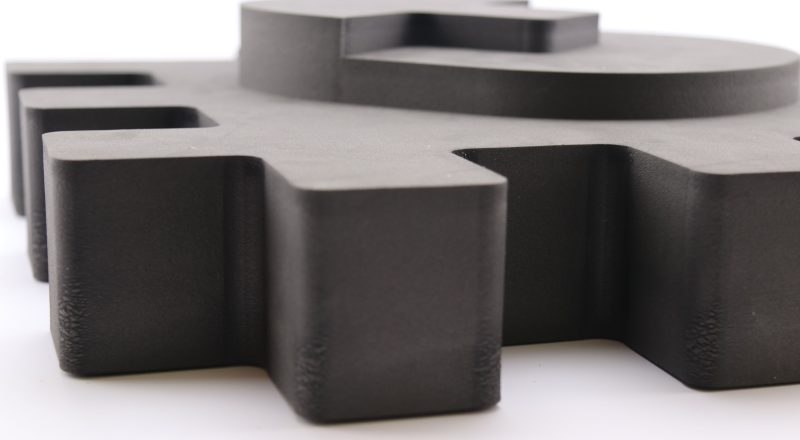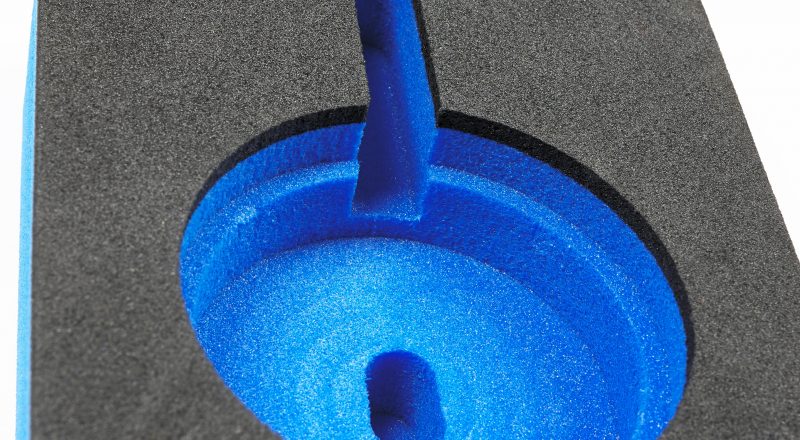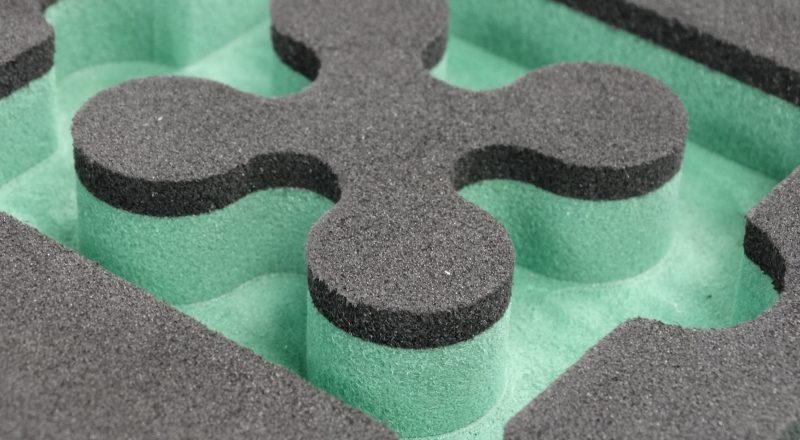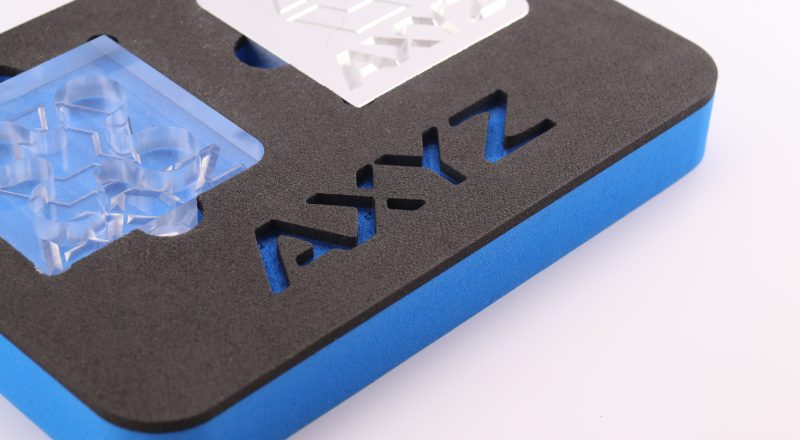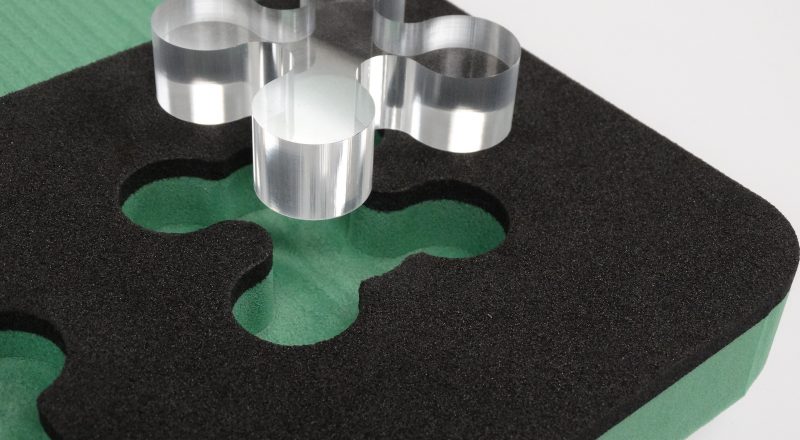CNC Routers for Foam Packaging Materials
When it comes to keeping your packages safe during the shipping process, foam can’t be beat. Affordable, lightweight, easily customizable – business owners are reaping the benefits of this material across the globe. The most common types of foam – polyurethane (PU) and polyethylene (PE)—are diametrically opposite in density and weight. Using a “one tool cuts all” approach isn’t going to work, as each type requires a specific cutting tool for quality of cut and precision. Basically, the lower the density, the softer the foam and the higher the density, the harder the foam. When cutting low density foams, it’s best to use a router bit and for high density foam, a knife blade.
POLYURETHANE (PU)
PU is a type of foam that is hard and high density, so a router bit is perfect for do the job. But not all router bits are the same, so it’s important to choose the appropriate one for your design. If you choose an upward spiral router bit, an upward force is applied to the material, causing it to lift and produce unwanted contours or depths of cut. A downward spiral bit, on the other hand, pushes the material down, resulting in more material being removed than desired which could leave a larger pocket or even a smaller part than anticipated. The best option is a straight flute router bit, which gives it a clean edge finish.
POLYETHEYLNE (PE)
PE foam is a light and rather cushy type of foam. Routing cutters will tear into it, but not cut it satisfactorily. Cutting light foam with a router bit will generally yield unacceptable results in terms of product security and appearance. PE and other light foams require specific tools, like knife blades. Available up to 5” (120mm) long, knife blades are used to cut intricate shapes with little or no waste material. When programmed with an oscillating motion, knife blades will cut PE with the exact precision it requires, delivering clean cut edges without fraying.
To determine the best type of router bit or oscillating knife for your material, contact your Local Customer Care Team.
THE NEED FOR MULTI-PURPOSE MACHINES
A multi-purpose machine with the proper tools, programmed to cut all types of foam, will resolve the challenges associated with foam processing. These include CNC tables with either a dual or a triple-Z axis. With a multi-purpose machine, the CNC table is configured with a routing spindle and one or two different knives. In the triple-Z configuration, the machine has the potential to also cut and crease corrugated cardboard. A combination of a specific spindle (either quick-release or collet) along with an oscillating or tangential knife will facilitate cutting of various types of foam including closed or open cell PE.
Certain multi-purpose CNC machines are ideal for small runs production and prototyping. One example where this benefit comes into play is a custom case for high-value and very expensive field instruments. The foam in the case must be cut and shaped to the specificity required for the newly created case. Another prototyping example occurs with touring musician groups. Expensive amplifiers and consoles have to be packaged very carefully due to the intense and sometimes stress-filled moves from city to city. Multi-purpose routers with tangential and oscillating knives can help assure that foam packaging of costly musical instruments, lights and props will be able to handle the pounding of months of road travel, set-up and performance.
Regardless of the type of usage, accuracy is essential. The hybrid or multi-purpose router with the appropriate knife can be accurately programmed thus eliminating guesswork and likelihood of an inaccurate cut and inefficient use of materials. Another valuable feature that some CNC tables can offer is the ability to digitize accurately the shape of the product that will be packaged, which greatly simplifies the programing of complex shaped products.
It’s very important for the manufacturers’ and shippers’ process and budget that any machine purchased is capable of performing several different operations on the same foam. Options increase and process time decreases with the right tables and tools.
Another element in this equation is the role of the supplier or vendor who provided the machine and the tools. Conducting due diligence in the background, reputation and track record of potential vendors cannot be understated. Companies have to be assured the vendor they select will be responsive and reliable at all times, actually a business partner. An investment in sophisticated machinery like multi-purpose CNC routers and knives demands no less.

